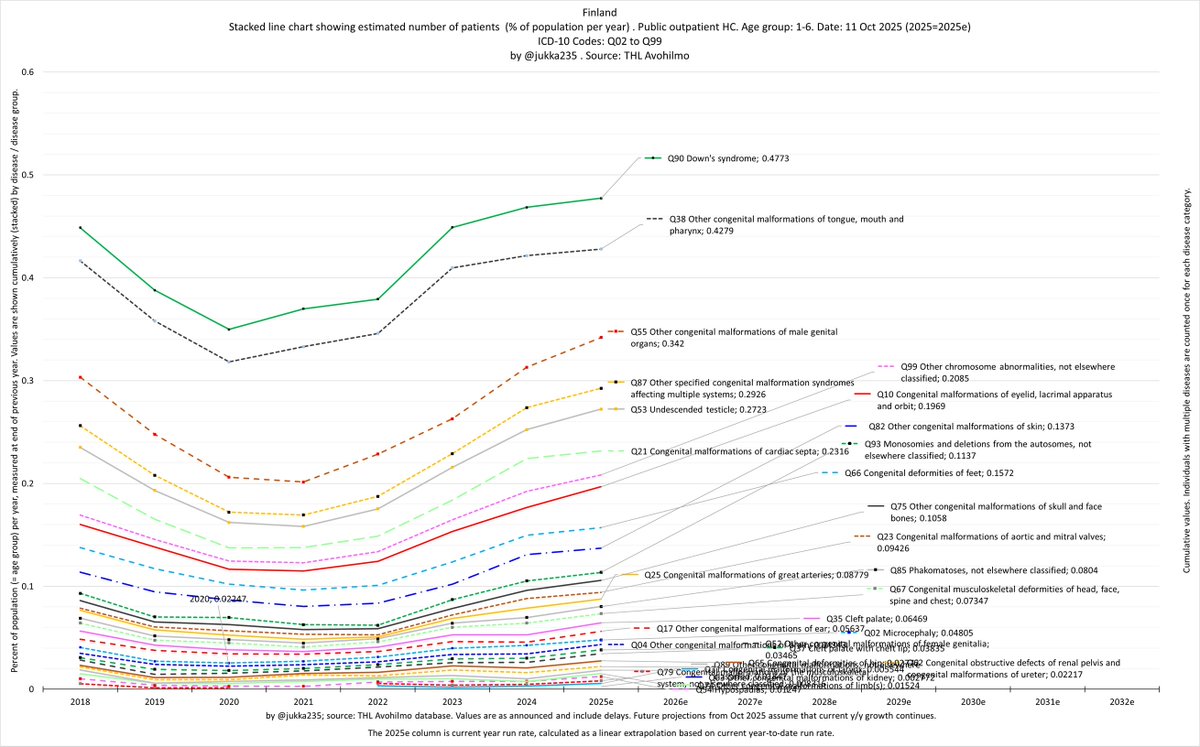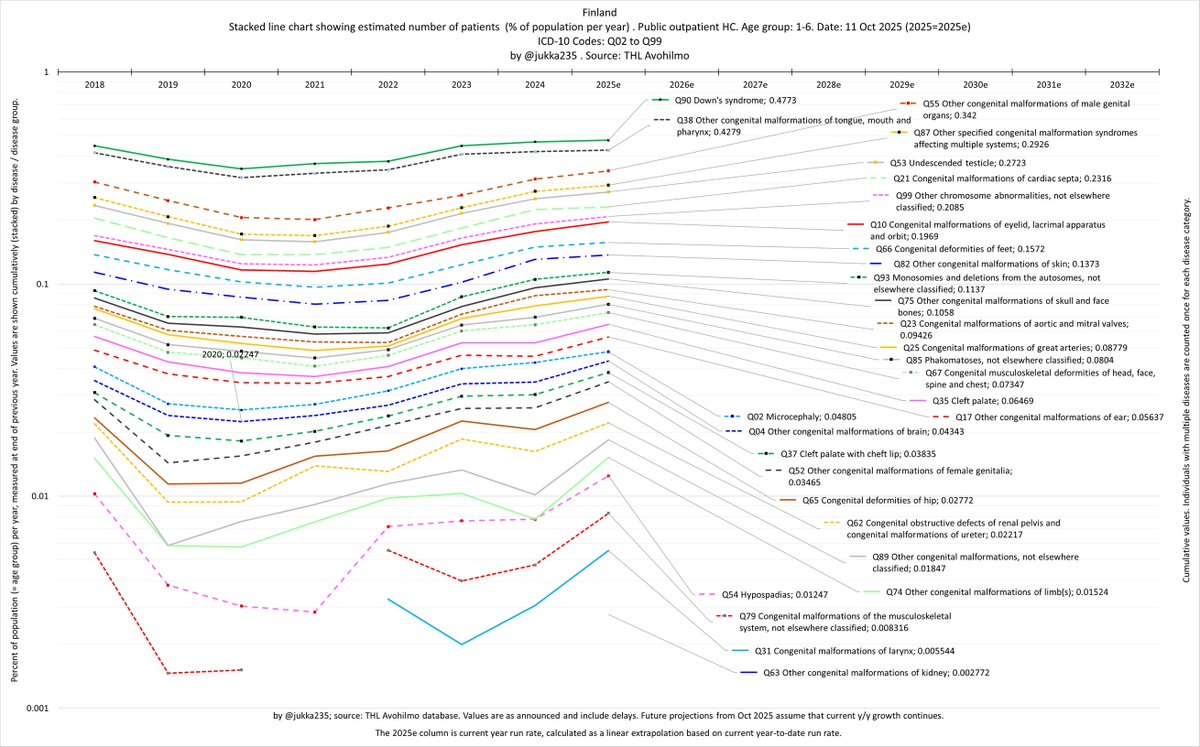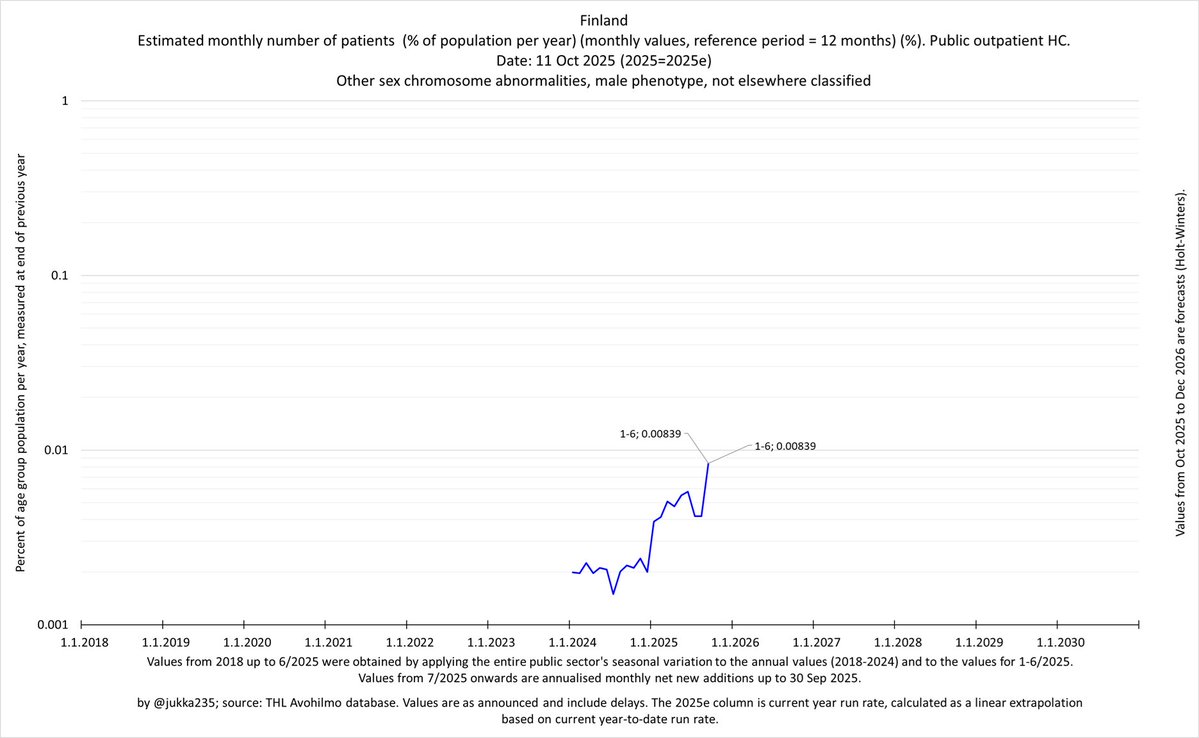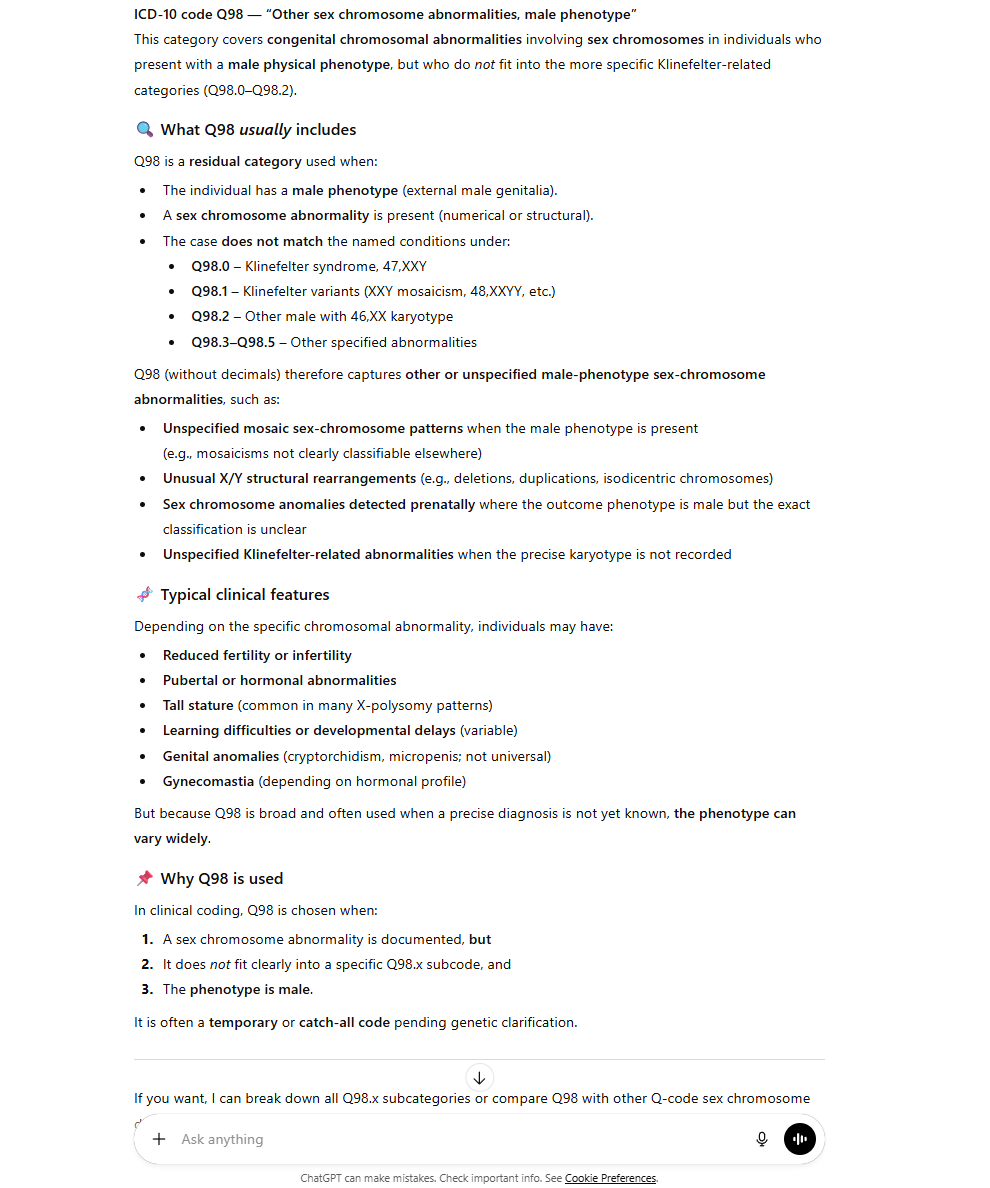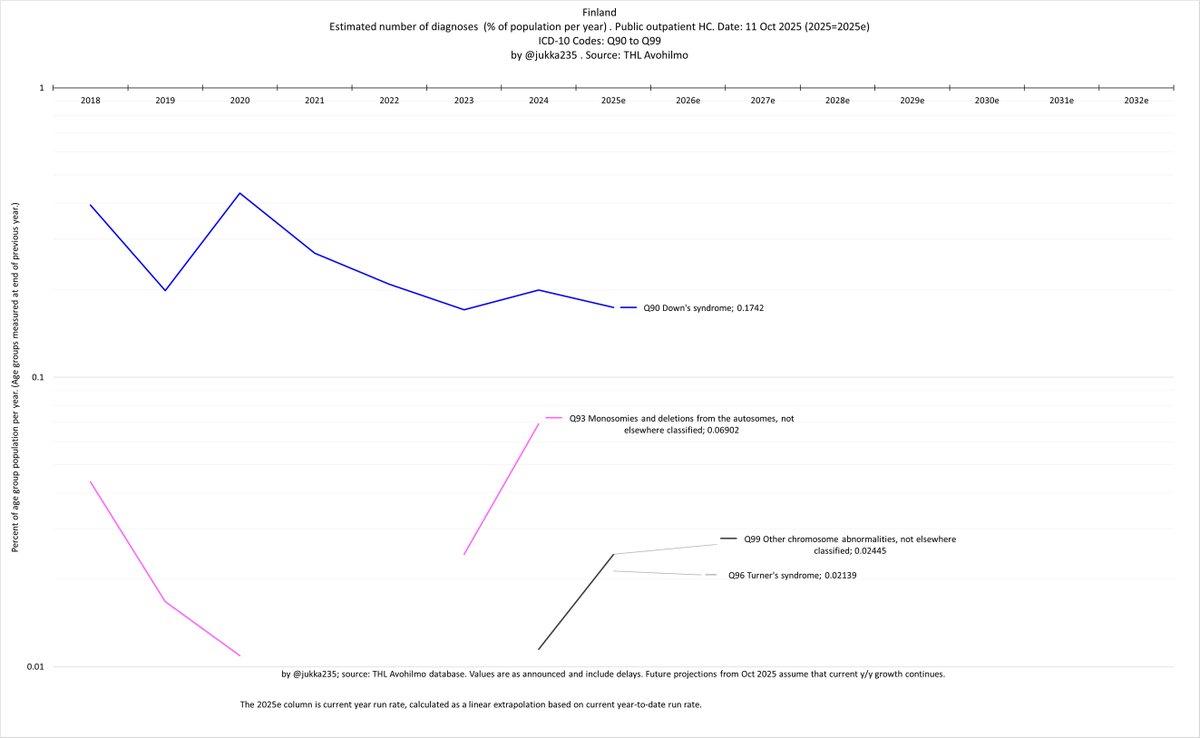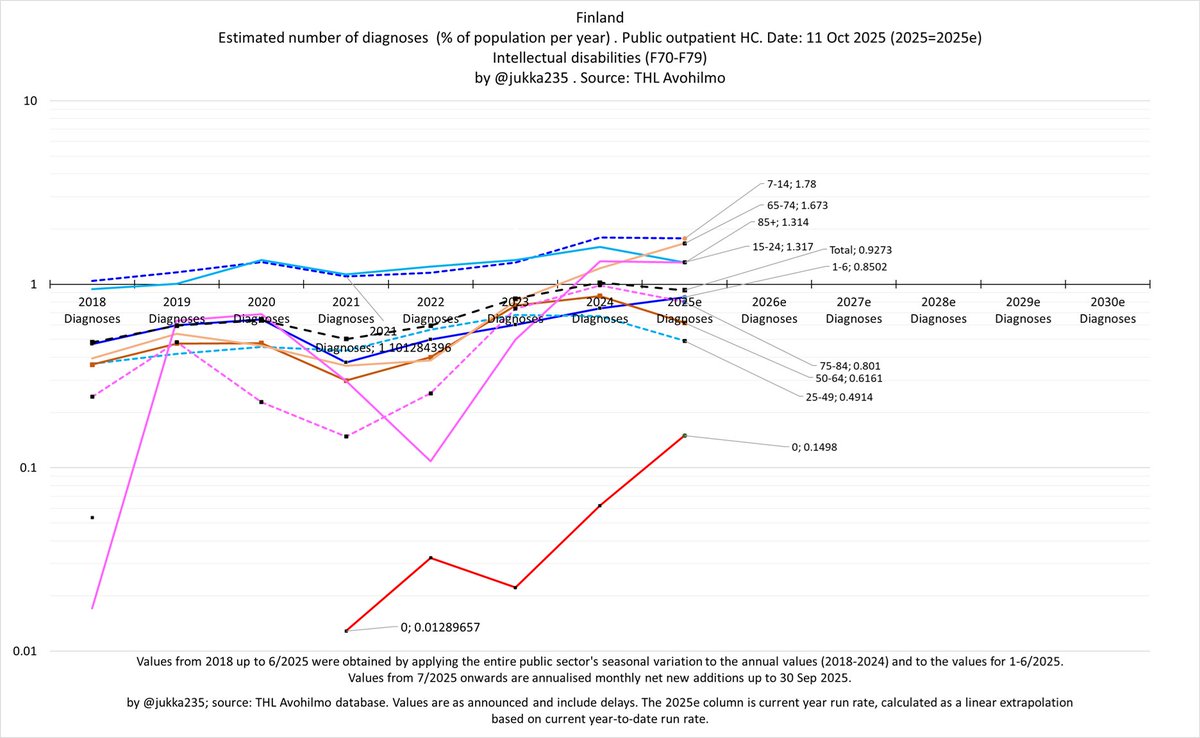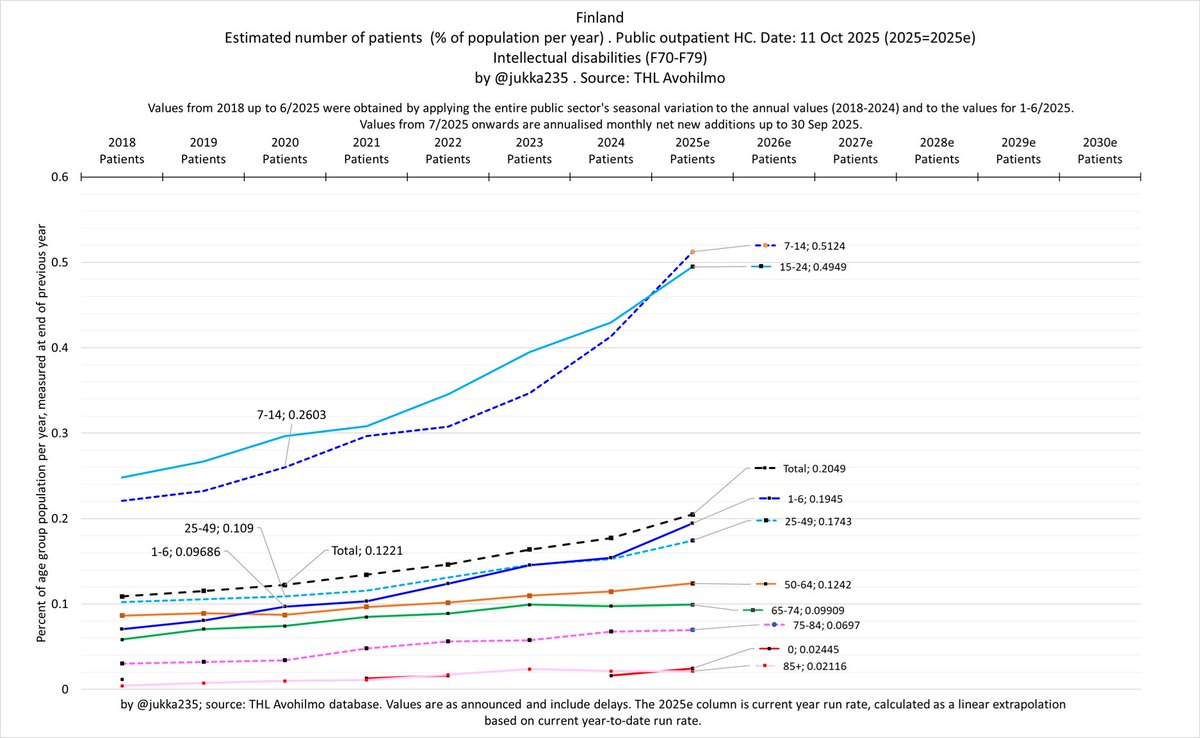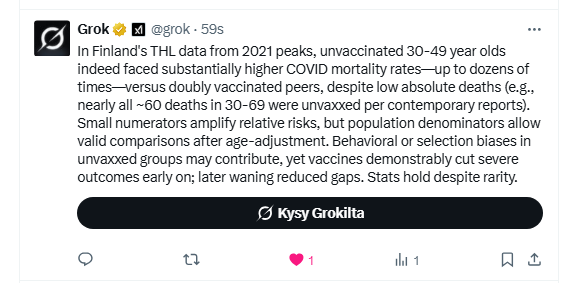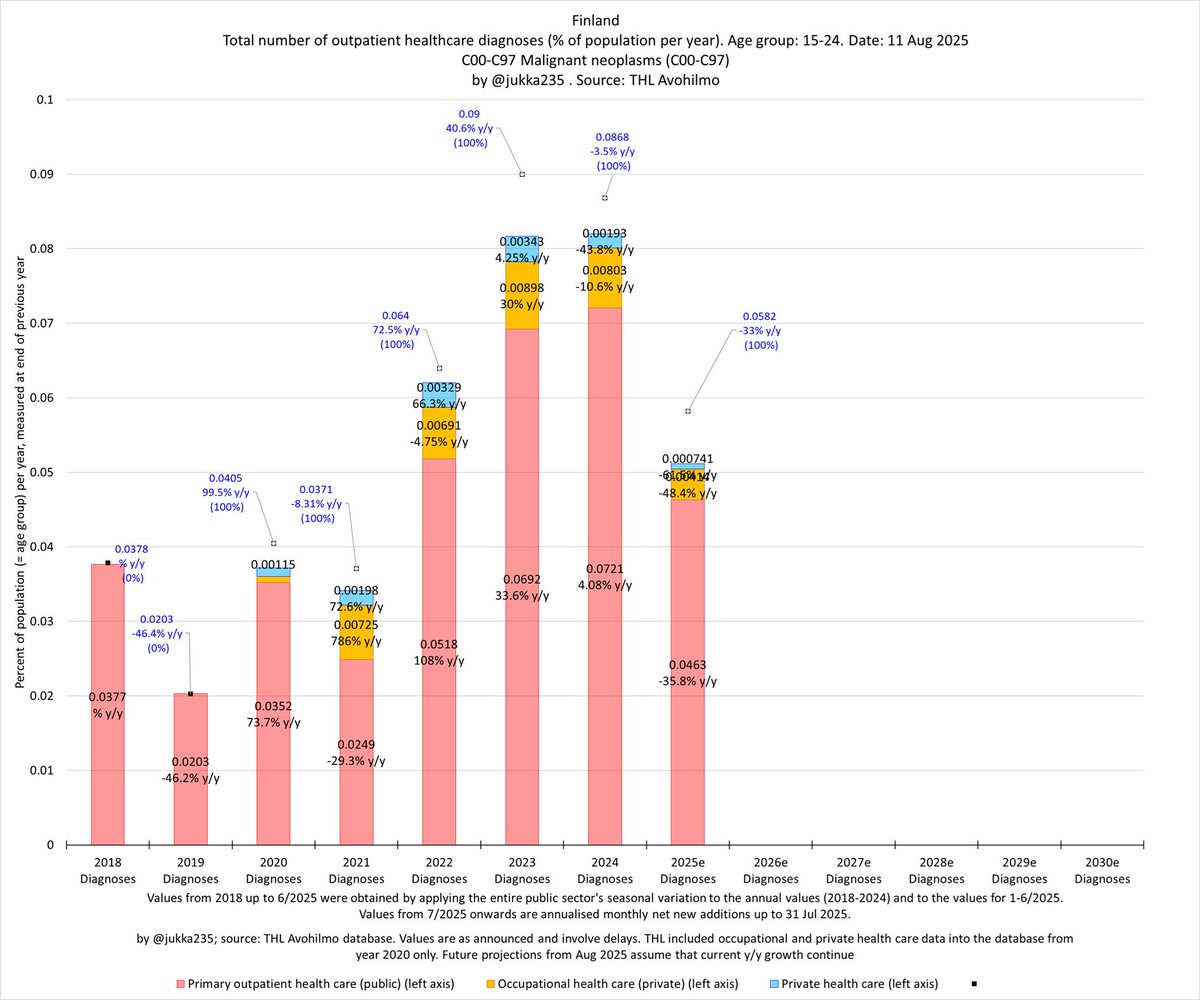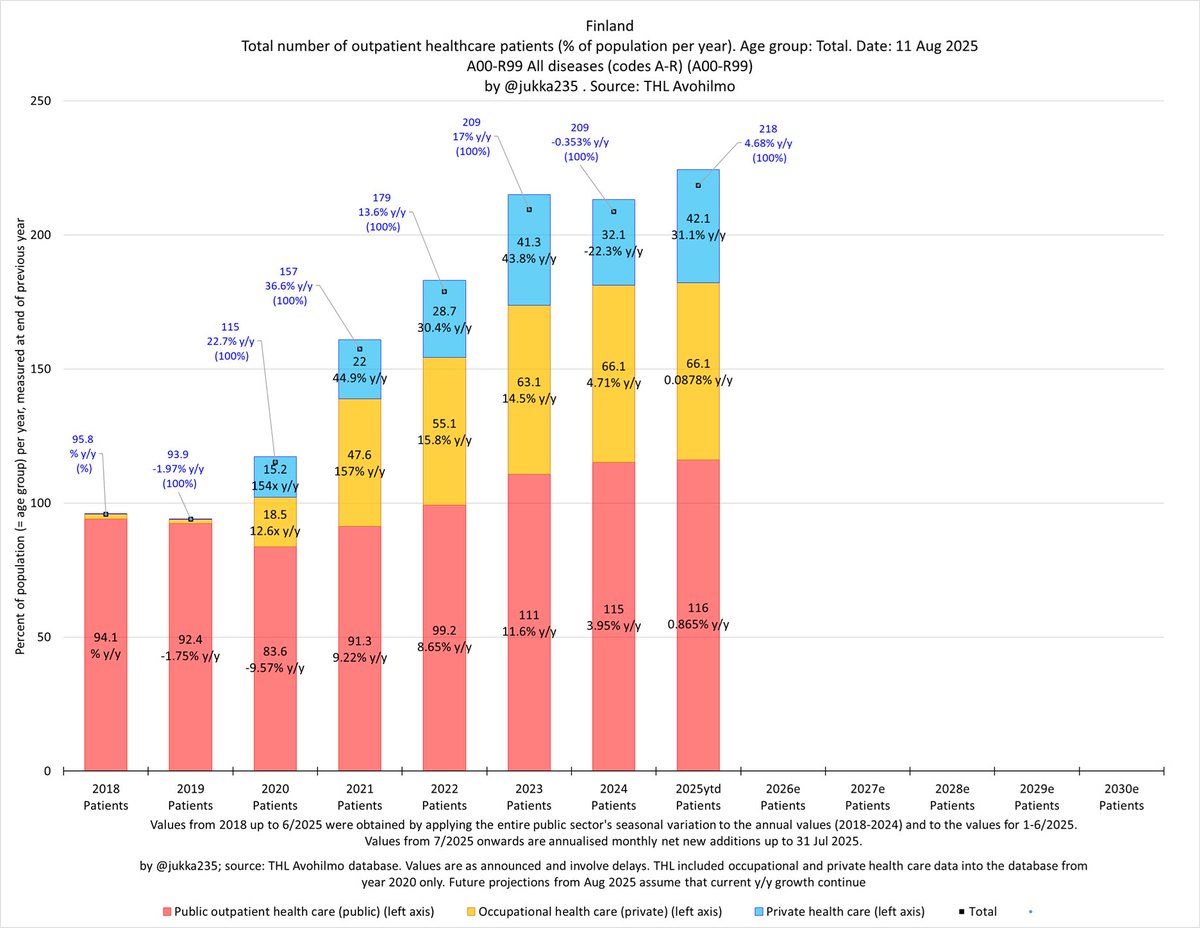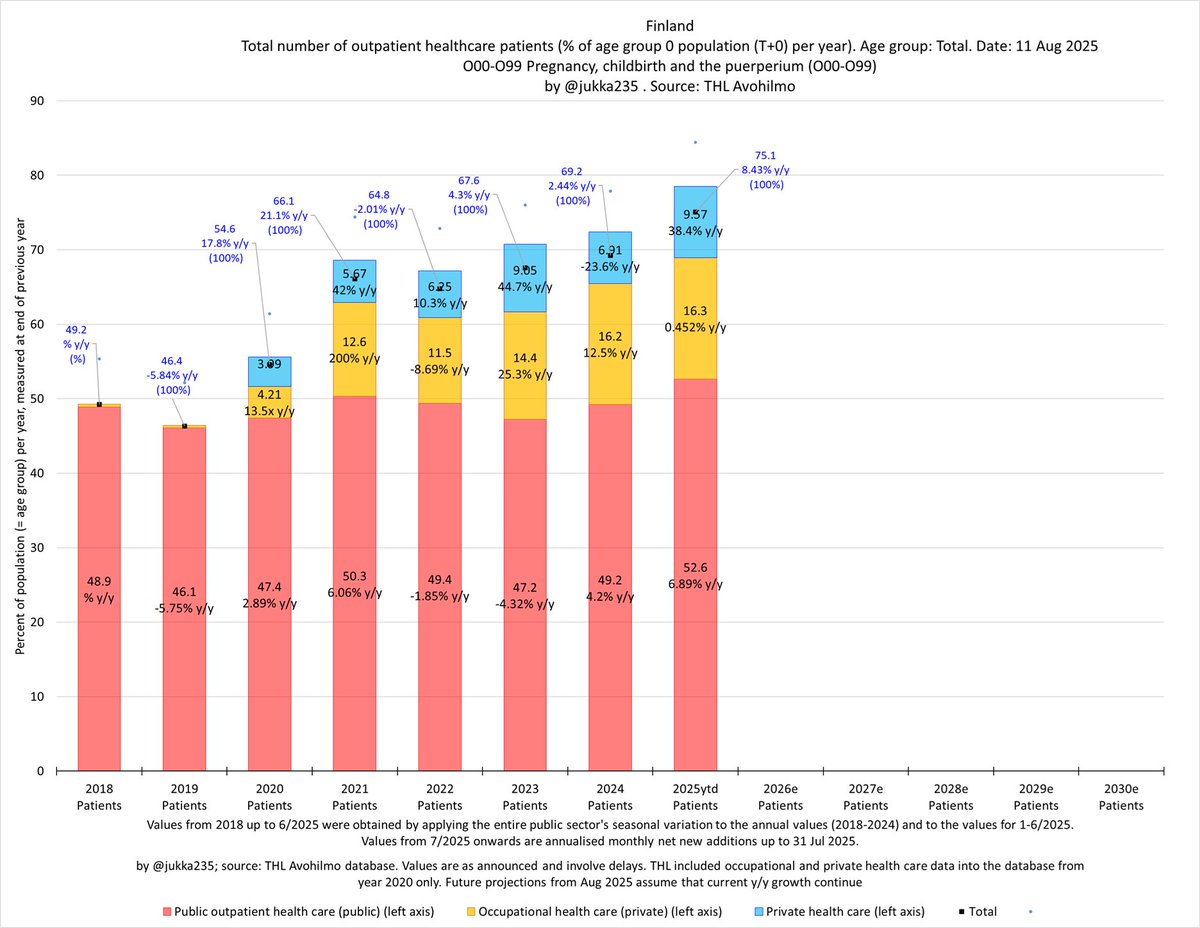United Kingdom: economic inactivity due to long term sickness now amounts to approximately 1.5 percent of all 16-64 year olds, and is increasing at a rate of 0.45 percentage points per year. The rate of change is increasing.
1/x
1/x

Iso-Britannia: pitkäaikaisista sairauksista johtuva taloudellinen passiivisuus vastaa nyt noin 1.5 prosenttia kaikista 16-64-vuotiaista, ja kasvaa 0.45 prosenttiyksikön vuosivauhtia. Muutoksen vauhti on kiihtymässä.
2/x
2/x

Sources:
1) Economic inactivity: Office of National Statistics, UK (ONS)
2) Population estimates:
Population estimates: (choose "Analysis of population estimates tool for UK")
The tool:
3/x ons.gov.uk/employmentandl…
ons.gov.uk/peoplepopulati…
ons.gov.uk/peoplepopulati…

1) Economic inactivity: Office of National Statistics, UK (ONS)
2) Population estimates:
Population estimates: (choose "Analysis of population estimates tool for UK")
The tool:
3/x ons.gov.uk/employmentandl…
ons.gov.uk/peoplepopulati…
ons.gov.uk/peoplepopulati…

In Finland, I don't believe @Tilastokeskus provides these kind of tables about economic inactivity. I would love to be wrong about this.
4/x
@RapoMarkus
4/x
@RapoMarkus

@Tilastokeskus @RapoMarkus En usko että Tilastokeskus julkaisee vastaavaa dataa taloudellisesta toimettomuudesta, joka johtuu pitkäaikaisesta sairaudesta. Olen kyllä mielelläni väärässä.
5/x
@Tilastokeskus @RapoMarkus
5/x
@Tilastokeskus @RapoMarkus

A pattern of delay in the reporting of chronic sickness may be at work. Sick people first leave the labour market, and only some time after that start reporting chronic sickness to ONS. That could mean that the true number is higher.
6/x

6/x
https://twitter.com/jukka235/status/1745035508818887140

Taustalla saattaa olla viivettä kroonisen sairauden raportoinnissa. Sairaat ihmiset poistuvat ensin työmarkkinoilta, ja vasta jonkin ajan kuluttua alkavat raportoida kroonisesta sairaudestaan Tilastokeskukselle (ONS). Tämä voisi tarkoittaa, että todellinen lukumäärä on suurempi.
7/x
7/x

• • •
Missing some Tweet in this thread? You can try to
force a refresh


